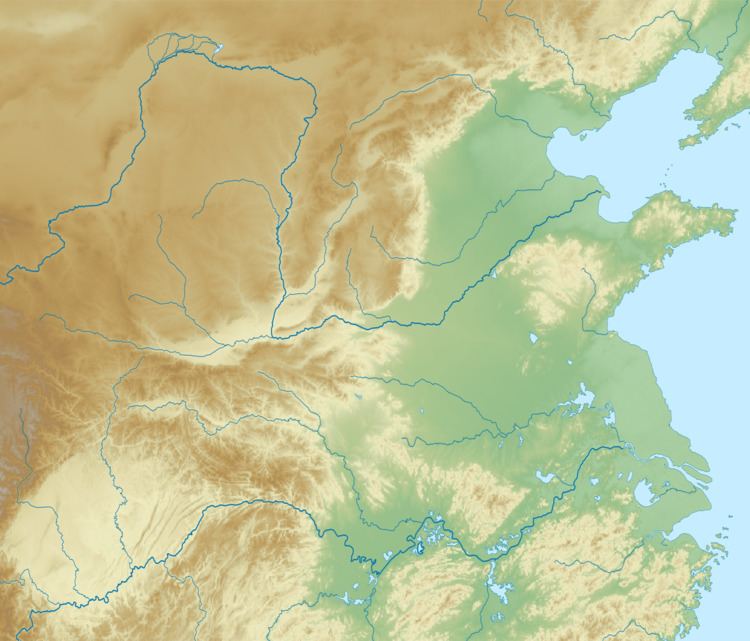Founded c. 2300 BC | Area 280 ha Abandoned c. 1900 BC | |
 | ||
Address Xiangfen, Linfen, Shanxi, China | ||
Pork ribs with taosi sauce
Taosi (Chinese: 陶寺; pinyin: Táosì) is an archaeological site in Xiangfen County, Shanxi, China. Taosi is considered to be part of the late phase of the Longshan culture in southern Shanxi, also known as the Taosi phase (2300 BC to 1900 BC).
Contents
Archaeology
Taosi was surrounded by a gigantic rammed-clay enclosure. This was discovered from 1999 to 2001 by the archaeologists from the Institute of Archaeology, Chinese Academy of Social Sciences; they attributed this wall to the Middle Taosi period (4,100 to 4,000 BP). Rectangular in form with an inner area of 280 ha.
An internal rammed-earth wall separated the residential and ceremonial areas of the elite from the areas inhabited by commoners, signifying the development of a stratified society.
The Huaxia settlement outgrew the perimeter of the wall.
The settlement is the largest Longshan site discovered in the Linfen basin, Yellow River basin area, possibly a regional center. The settlement represents the most political system on the Central Plains at the time. The polites in the Taosi site are considered an advanced chiefdom, but may not have not developed into a higher political organization. It was not the Taosi polites but, the less socially complex Central Plains Longshan sites, the scattered, multi-system competing systems that gave rise to early states in this region.
Ancient "observatory"
Taosi also contained an astronomical observatory, the oldest in East Asia.
This was discovered in 2003-2004. Archaeologists unearthed a Middle Taosi period semi-round foundation just beside southern wall of the Middle Taosi enclosure, which could be used for astronomical observations. The structure consists of an outer semi-ring-shaped path, and a semi-round rammed-earth platform with a diameter of about 60 m. The platform is 42m in diameter and over 1000 sq m in area. It can be reconstructed as a three-level altar.
Standing in the center of the altar and watching through the slots, one can find that most of slots respectively orientate to a given point of the Chongfen Mountain to the east.
Necropolis
The cemetery of Taosi covered an area of 30,000 square meters (3ha) at its height.
The cemetery contained over 1,500 burials. The burials at Taosi were highly stratified (the most stratified of Longshan sites), with burial wealth concentrated in the graves of a few males (nine large graves). The largest graves were placed in separated rooms with murals, had a large cache of grave goods (some with over 200 objects, including jades, copper bells, wooden and crocodile skin musical instruments); middle-size graves featured painted wooden coffins and luxury objects; most of the small graves did not have grave goods. A single bronze bell was also found at a Taosi grave.
Emperor Yao connection
Some Chinese archaeologists believe that Taosi was the site of a state Youtang (有唐) conquered by Emperor Yao (traditionally c. 2356–2255 BC) and made to be his capital.
According to some Chinese classic documents such as Yao Dian (Document of Yao) in Shang Shu (Book of Ancient Time), and Wudibenji (Records for the Five Kings) in Shiji (Historic Records), the King Yao assigned astronomic officers to observe celestial phenomena such as the sunrise, sunset, and the evening stars in culmination in order to make a solar and lunar calendar with 366 days for a year, also providing for the leap month. The observatory found at Taosi just coincides with these records.
On the other hand, Western scholars tend to believe that emperor Yao is a mythical figure.
It is believed that the city collapsed with a rebellion against the ruling class.
